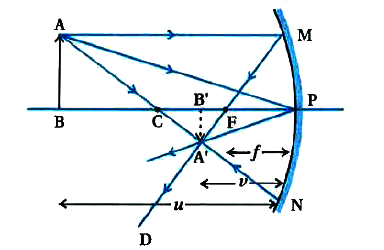What is objective and eye-piece lens ? Solution in Gujrati
Step by step video & image solution for What is objective and eye-piece lens ? by Physics experts to help you in doubts & scoring excellent marks in Class 12 exams.
Updated on:21/07/2023Topper's Solved these Questions
- RAY OPTICS AND OPTICAL INSTRUMENTSBOOK - KUMAR PRAKASHANCHAPTER - RAY OPTICS AND OPTICAL INSTRUMENTSEXERCISE - SECTION-B (NUMERICALS)(NUMERICAL FROM TEXTUAL ILLUSTRATIONS)
17 Videos
- RAY OPTICS AND OPTICAL INSTRUMENTSBOOK - KUMAR PRAKASHANCHAPTER - RAY OPTICS AND OPTICAL INSTRUMENTSEXERCISE - SECTION-B (NUMERICALS)(NUMERICAL FROM TEXTUAL EXERCISE)
45 Videos
- RAY OPTICS AND OPTICAL INSTRUMENTSBOOK - KUMAR PRAKASHANCHAPTER - RAY OPTICS AND OPTICAL INSTRUMENTSEXERCISE - SECTION-D (MULTIPLE CHOICE QUESTIONS (MCQs))(MCQs ASKED IN COMPETITIVE EXAMS)
142 Videos
- MOVING CHARGES AND MAGNETISMBOOK - KUMAR PRAKASHANCHAPTER - MOVING CHARGES AND MAGNETISMEXERCISE - SECTION D (MCQs ASKED IN COMPETITIVE EXAMS)
34 Videos
- SAMPLE QUESTION PAPER BOOK - KUMAR PRAKASHANCHAPTER - SAMPLE QUESTION PAPER EXERCISE - PART-B SECTION-C
5 Videos
Similar Questions
Suppose that the lower half of the concave mirror.s reflecting surface as shown in figure is covered with an opaque (non-reflective) material. What effect will this have on the image of an object placed in front of the mirror ?

View SolutionA small candle, 2.5 cm in size is placed at 27 cm in front of a concave mirror of radius of curvature 36 cm. At what distance from the mirror should a screen be placed in order to obtain a sharp image? Describe the nature and size of the image. If the candle is moved closer to the mirror, how would the screen have to be moved?
View SolutionWhich of the following is used in optical fibres ?
View SolutionElectric charge Q having mass M moves on a circular path of radius R with velocity →v, perpendicular to uniform magnetic field B. When a particle completes one revolution, work done by the field is _______
View SolutionTwo charges –q and +q are located at points (0, 0, –a) and (0, 0, a), respectively.
(a) What is the electrostatic potential at the points (0, 0, z) and (x, y, 0) ?
(b) Obtain the dependence of potential on the distance r of a point from the origin when r/a>>1 .
(c) How much work is done in moving a small test charge from the point (5,0,0) to (–7,0,0) along the x-axis? Does the answer change if the path of the test charge between the same points is not along the x-axis?
View SolutionThe focal length of the objective and the eye piece of a compound microscope are 2.0 cm and 3.0 cm, respectively. The distance between the objective and the eye piece is 15.0 cm. The final image formed by the eye piece is at infinity. The two lenses are thin. The distance in cm of the object and the image produced by the objective, measured from the objective lens, are respectively
View SolutionA small telescope has an objective lens of focal length 144cm and an eye-piece of focal length 6.0cm. What is the magnifying power of the telescope ? What is the separation between the objective and the eye-piece ?
View SolutionIn a compound microscope, the objects is 1cm form the objective lens. The lenses are 30cm apart and the intermediate image is 5cm from the eye-piece. What magnification is produced?
View SolutionIn compound microscope , as compare to eye piece, objective lens has _________ focal length
View SolutionThe focal length of objective lens is ______ than the eye pieces in compound microscope.
View SolutionIn a Huygen’s eye-piece, with an eye-piece of focal length F, the distance between the eye-piece and field lens should be
View SolutionThe magnifying power of an astronomical telescope in the normal adjustment position is 100. The distance between the objective and eye piece is 101cm . Calculate the focal lengths of objective and eye piece.
View SolutionA small telescope has an objective lens of focal length 144 cm and an eyepiece of focal length 6.0 cm. What is the magnifying power of the telescope? What is the separation between the object lens and the eye piece?
View SolutionIn a compound microscope , the magnificent virtual image is found at a distance of 25 cm from the eye-piece . The focal length of its objective lens is 1 cm. If the microspore is 20 cm , then the focal length of the eye-piece lens ( in cm) is .................
View SolutionA small telescope has an objective lens of focal length 144cm and an eye-piece of focal length 6.0cm. What is the magnifying power of the telescope ? What is the separation between the objective and the eye-piece ?
View Solution
